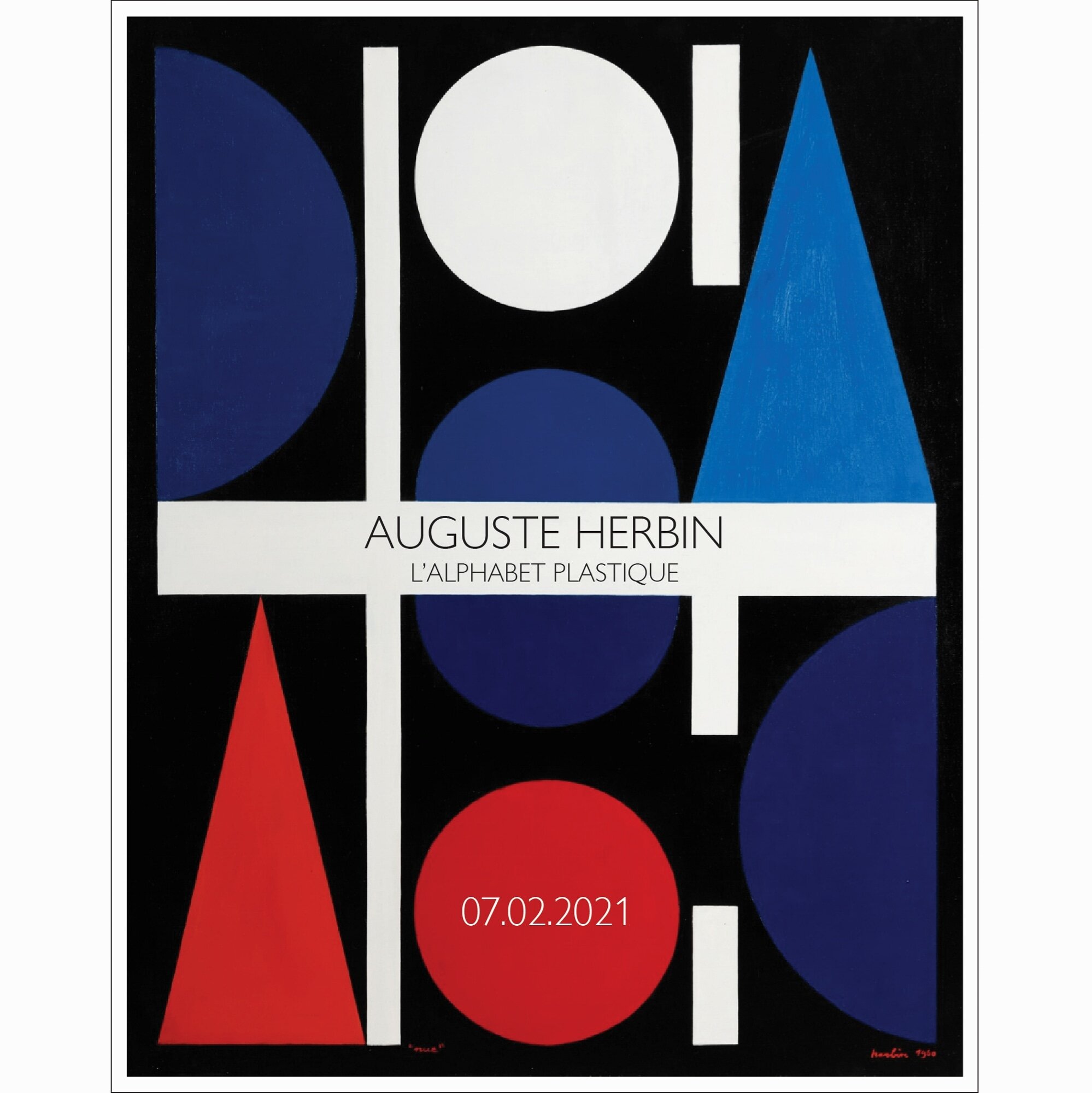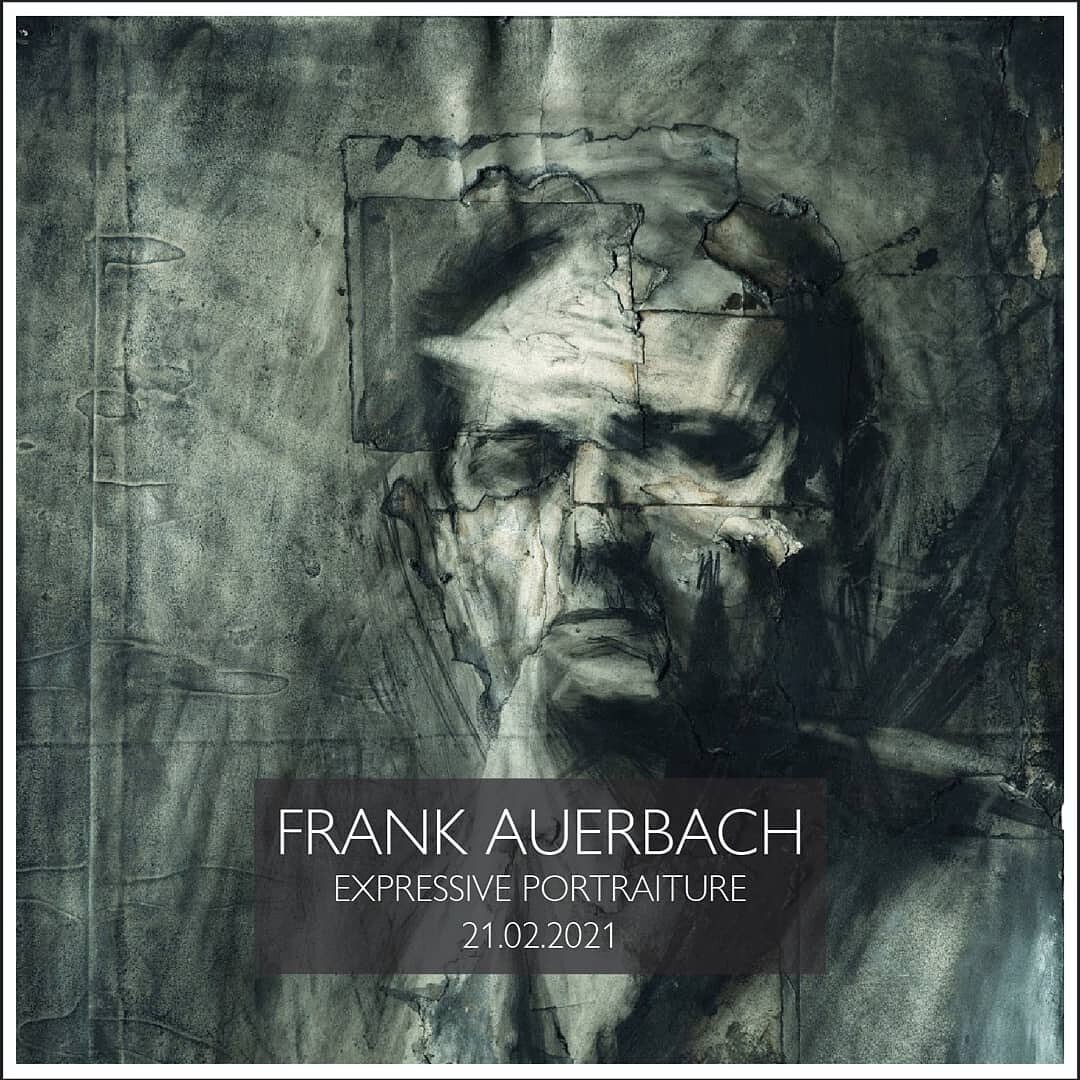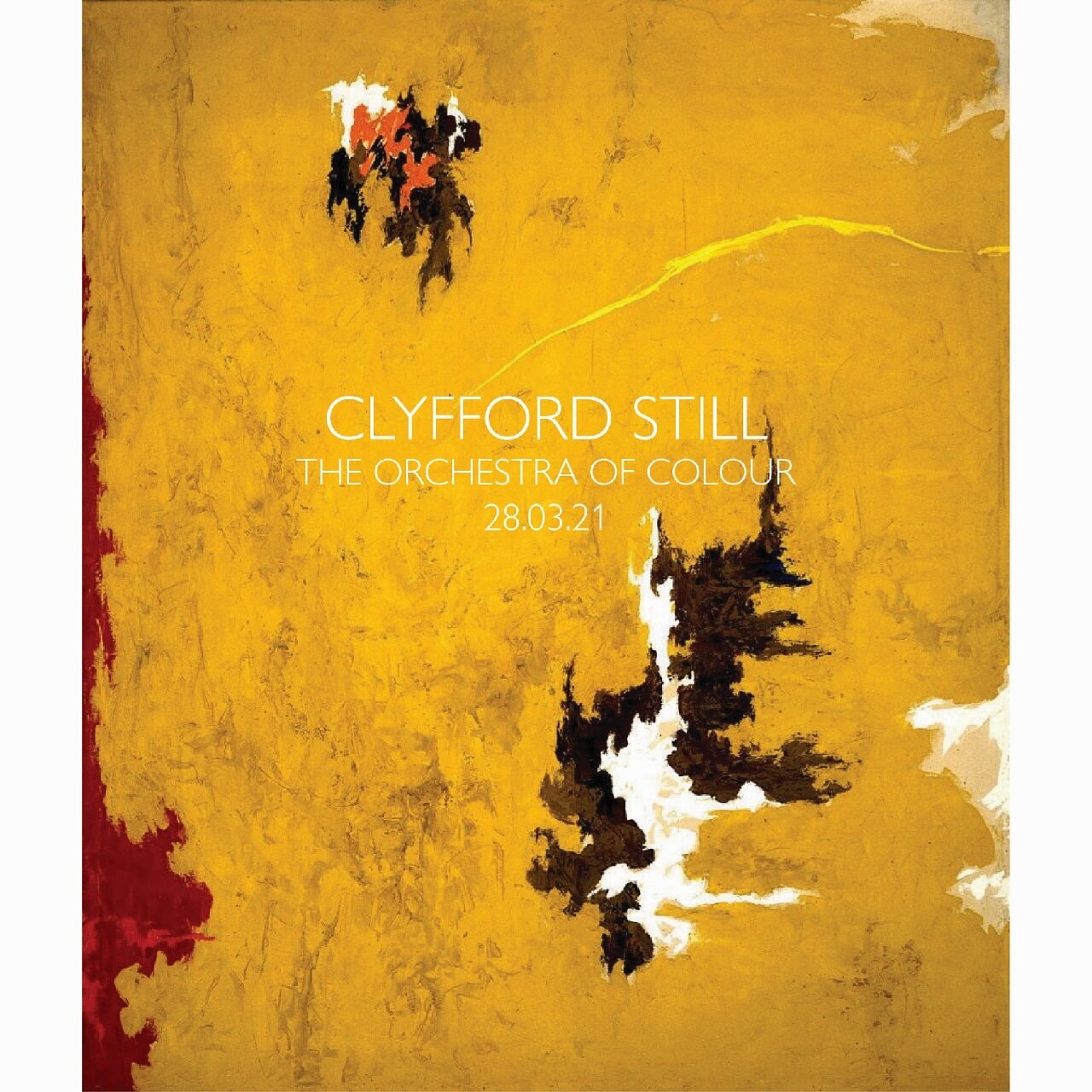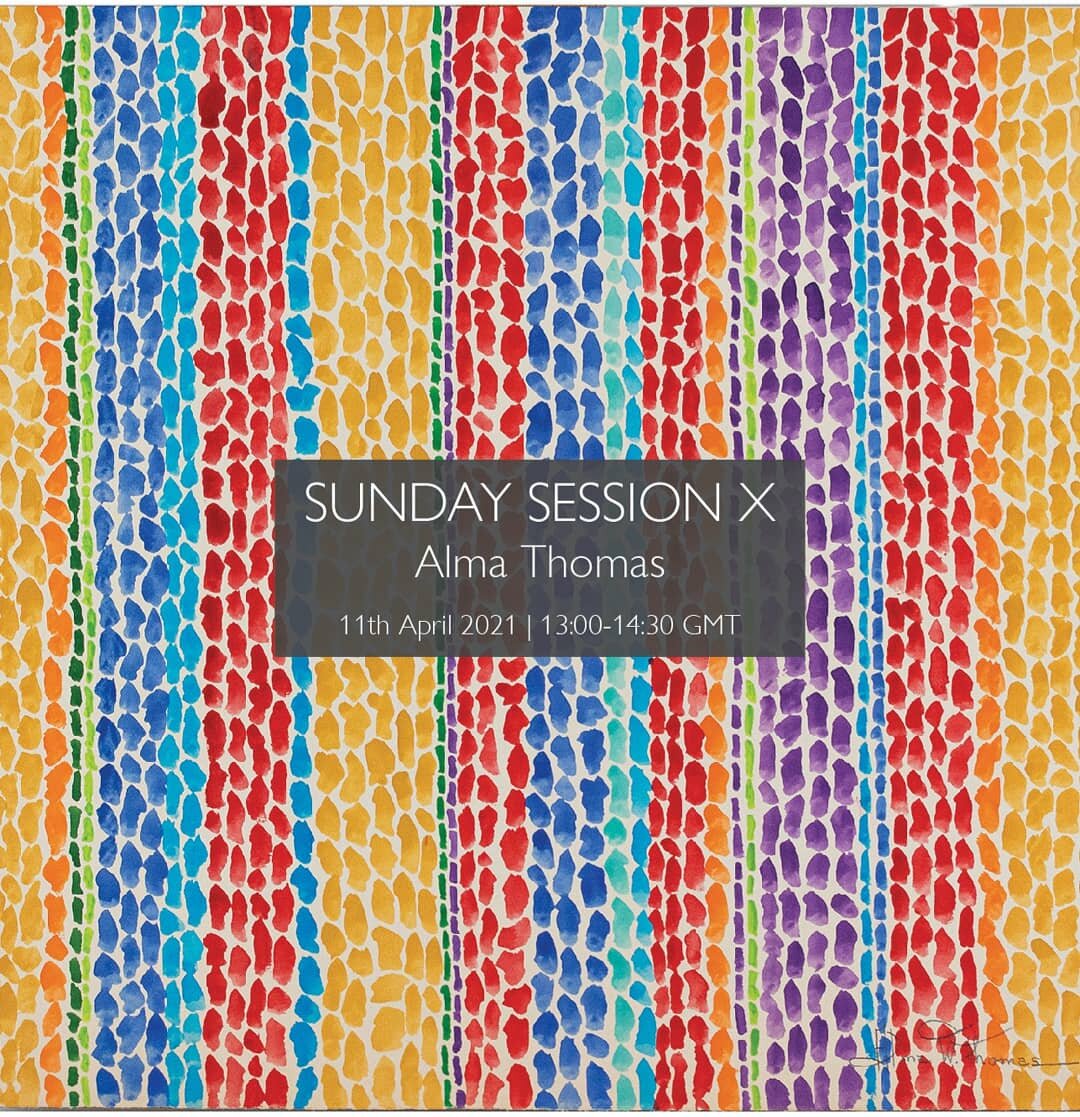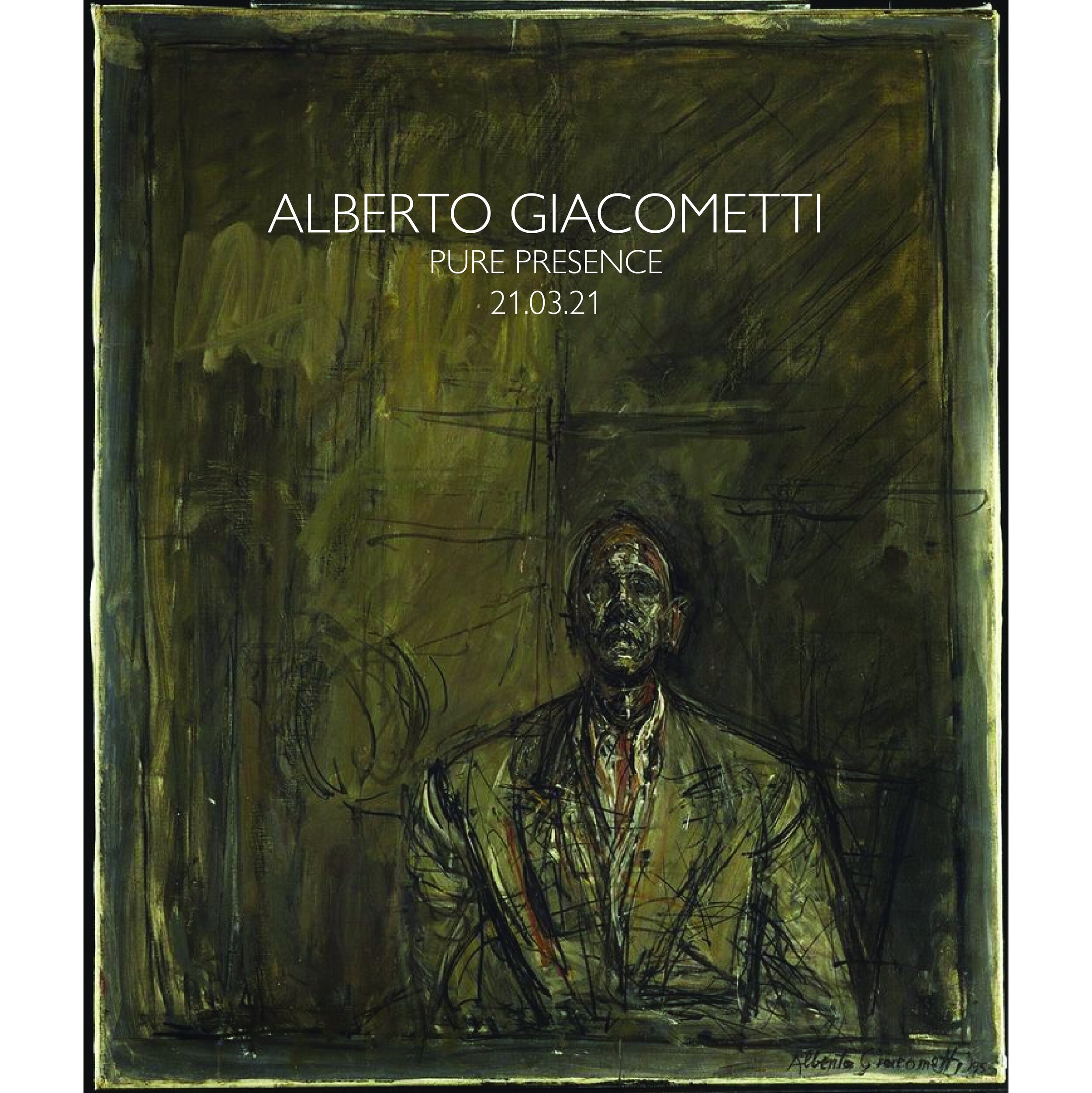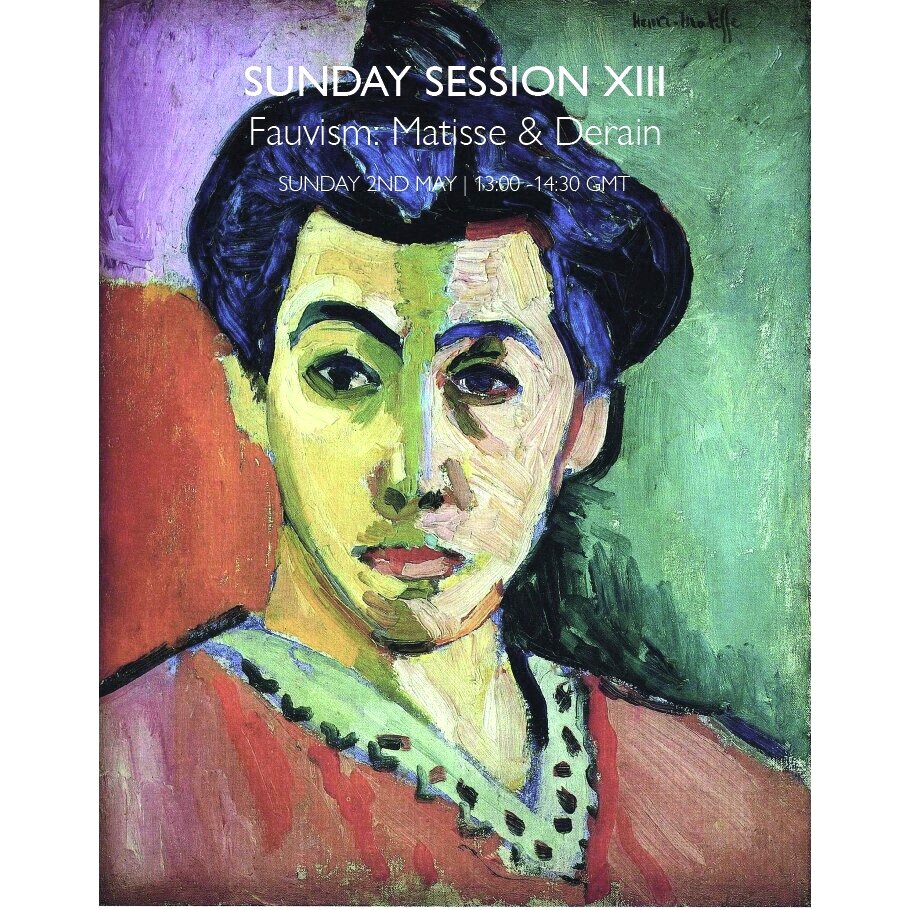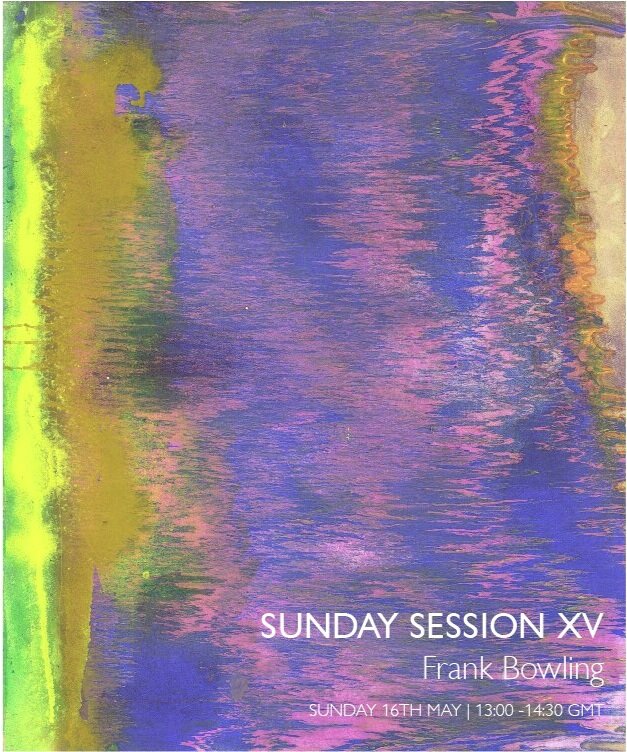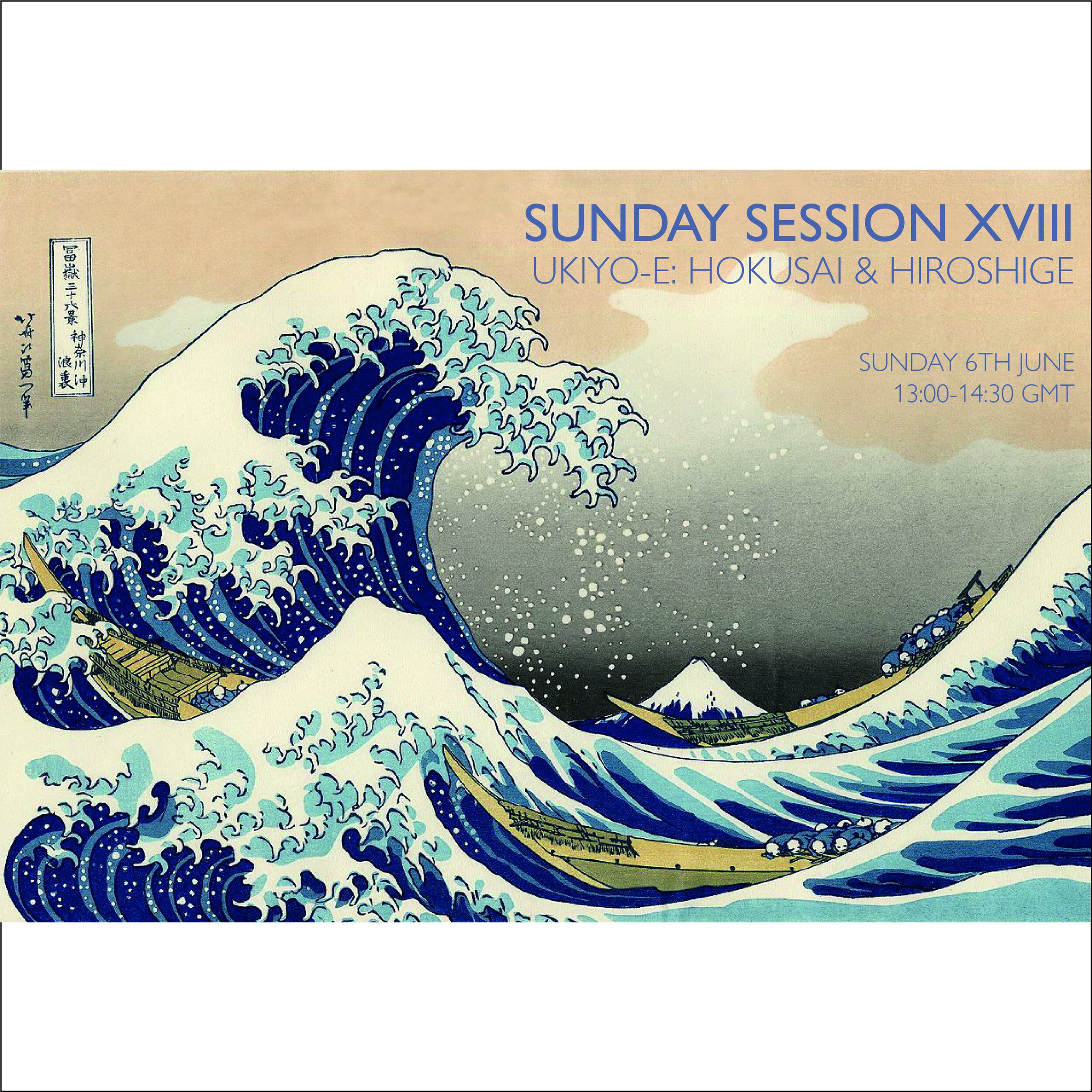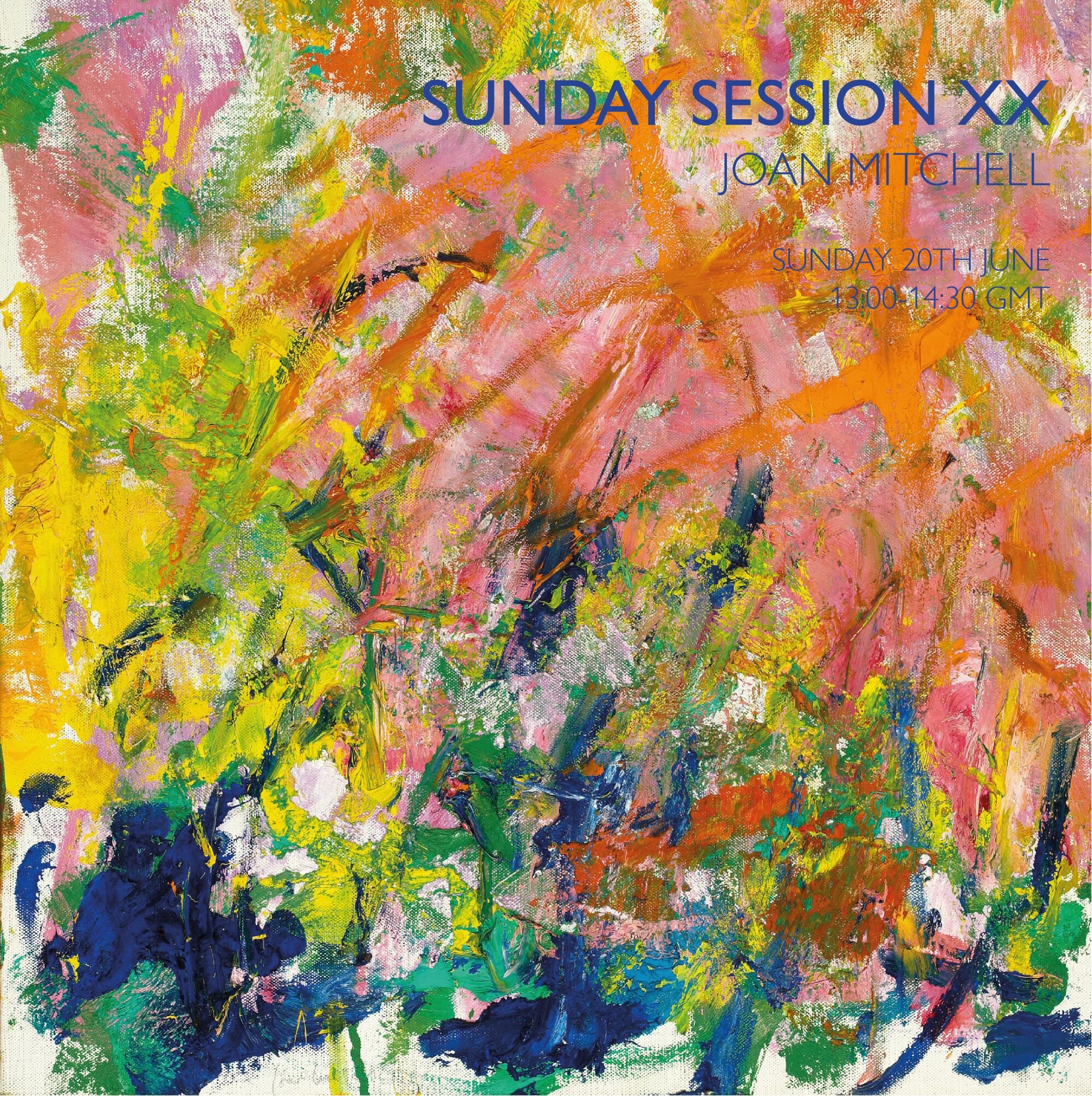SUNDAY SESSIONS (ONLINE)
A SERIES OF ONLINE ABSTRACT/EXPRESSIVE DRAWING WORKSHOPS, THAT RAN ON THE LAST SUNDAY OF EVERY MONTH DURING 2021
each class IS themed around a particular artist/movement & IS a mixture of art history presentation & experimental drawing exercises
ARCHIVE OF RECORDED WORKSHOPS
THE RECORDINGS of the below workshops are available to view/download on vimeo - just donate what you can via paypal for access
RECORDING
Auguste Herbin & L’Alphabet Plastique
Sunday 7th February | 13:00-14:00 GMT
One of the 20th Century’s ‘forgotten’ greats, Herbin was a phenomenally talented painter & thinker, whose artistic career culminated in his development of ‘L’Alphabet Plastique’; a visual language in which he assigned form, colour & musical notes to the letters of the alphabet. this allowed him to construct complex abstract compositions inspired only by a single word.
we’ll dive into his work, life & process before attempting to construct our own geometric masterpieces based on a word (or name - hello valentines day gift!); combining our own artistic instincts with Herbin’s system of abstraction to create something truly personal to you.
Materials required: pencil & paper. some colours would be lovely too (pencils, pastels, chalks, paints, inks etc.)
RECORDING
Lee Krasner & Destroying to Create
Sunday 14th February | 13:00-14:30 GMT
Often referred to as as 'Jackson Pollock's Wife' throughout her career, Lee Krasner is now recognised as one of the foremost and important abstract expressionist painters; even of the 20th Century. Her large scale gestural paintings are shot through with such tremendous sensitivity & raw emotion it is an almost spiritual experience standing in front of her work.
In this workshop we'll look into her wide ranging and innovative approaches in the art history section, before we try an exercise inspired directly by her use of collage to repurpose old or 'failed' drawings into new, vibrant abstract compositions. You'll need scissors & glue as well as your drawing materials for this one!
Materials required: pencil, paper & eraser. ‘softer’ (i.e. charcoal or chalk) materials may be useful too.
RECORDING
Frank Auerbach & Expressive Portraits
Sunday 21st February | 13:00-14:30 GMT
Intense. Expressive. Powerful. Frank Auerbach's thick, viscous expressionistic paintings have inspired a whole generation of artists after him, and captivated audiences for decades. His drawings are equally impressive and display all his usual hallmarks; dark, brooding self portraits sit weightily alongside electric line sketches of his close group of life models. Always moving, altering, changing; his exhaustive, obsessive approach is evident here too.
We'll absorb his techniques and mentality in the art history section, before embarking on our own Auerbach-inspired (self) portraits in the second half of the class. There will be technical exercises alongside expressive ones to put us in the strongest possible position to create an expressive & individual final portrait.
Materials required: pencil, charcoal, chalk, paper & eraser
RECORDING
Howard Hodgkin: Making Memories
28th February | 13:00-14:30 GMT
Howard Hodgkin’s paintings are a beautifully harmonious collection of swirls; dots; gesture & vibrant colour that sing from the painted frames in which they hang. seemingly devoid of any obvious naturalism, hodgkin nonetheless defines himself as, “a representational painter, but not a painter of appearance. I paint representational pictures of emotional situations.” working from memory, he would regularly take years to finish a piece; painting and then repainting the wooden boards on which he worked until the image in front of him said what he wanted it to say.
Aafter diving into the visual feast of his back catalogue, we will create abstract emotional representations of a chosen memory using colour, mark making and our own artistic impulses.
Materials required: colours (inks, chalk, paint, pastels, pencils), pencil & paper
RECORDING
Georgia O’Keefe:
Natural Rhythm
7th March | 13:00 - 14:30 GMT
Often referred to as, “The Mother of American modernism”, Georgia O’Keefe’s extraordinary paintings remain as influential now as they ever did. From saturated, wide-screen landscapes of New Mexico; claustrophobic images of New York tower blocks to her almost semi-abstract enlarged flower paintings, her work is ultimately a celebration of not just the power and beauty of world around us, but also the art of looking. Whether that be in replicating the awe inspired by the verticals of the city and the horizontals of the desert, or finding that same awe in the smallest, most unassuming objects.
In this workshop, we’ll look into the development of her unique visual language and philosophy, before we attempt to create our own semi-abstract work designed to explore and emphasize the wonder in objects that we so often overlook.
Materials required: colours will be very important (pencils, pens, pastels, chalks, inks or paints). Pencil & paper. Magnifying glass optional!
RECORDING
Piet Mondrian:
Beauty of Simplicity
14th March | 13:00 - 14:30 GMT
One of the first painters to create truly abstract canvases, Mondrian’s huge geometric works are not only masterpieces in themselves, but also a turning point for painting; an exclamation point in a time of great shifts. Initially beginning his career as a relatively naturalistic landscape painter, he built upon the foundations laid down by the cubists and stretched their ideas to breaking point – pushing his work into genuinely revolutionary territory.
Interestingly, whilst he is revered by many, it is also common to see his work dismissed as naïve, or too simple to be special. This workshop will work to show the true levels of sophistication, effort and intelligence required to create compositions of such balance and beauty, and prove true the old adage that, “simplicity is the highest form of sophistication.”
The drawing exercise will be one of my favourite I have developed in which we will mirror Mondrian’s own journey from representative towards increasingly abstract means of expression.
Materials required: colours (pencils, pens, pastels, chalks, inks or paints). Pencil & paper
RECORDING
Alberto Giacometti:
Pure Presence
21st March | 13:00 - 14:30 GMT
Primarily known for his deeply unsettling, elongated figurative sculptures, Alberto Giacometti was also a highly accomplished painter and draughtsman. His drawings and paintings echo many of the features of his 3D work, and are completely unique to him. An astonishingly harsh self-critic, he worked obsessively to create images that could come close to assuaging his rampant negativity about his abilities; building layer upon layer of paint onto his canvases in a vain attempt to replicate the vision in his mind.
Whilst we’ll hope to not scale the psychological lows he experienced during the creative process, we will attempt to inhabit his tireless and physical approach to making in the second half of our workshop, in which we’ll be making our own personal and expressive figurative drawings (of ourselves or another – ideally from observation but not necessarily).
Materials Required: pencil & paper. Fineliners/ink/biro may be useful, as may colour, though we’ll likely stay fairly monochromatic
RECORDING
Clyfford Still:
Orchestra of Colour
28th March | 13:00 - 14:30 GMT
One of the foremost painters in the first generation Abstract Expressionists, Clyfford Still is not as well-known as some of his contemporaries, but his influence and talent cannot be underestimated. His mature works are huge colour field paintings inspired by a childhood growing up in the Canadian prairies; apparently random jagged shapes of bright, joyful yellows and oranges compete with blacks and blues; each area seemingly torn from upper layers of the canvas and built up in thick impasto that shimmers and dances in the light.
We’ll chart his early, naturalistic work and his shift toward abstraction in the late 30s & early 40s, before attempting to create our own Still-inspired colour field ‘paintings’ through a combination of preparatory sketches and a unique collage exercise.
Materials required: colours will be very important (pencils, pens, pastels, chalks, inks or paints). Pencil & paper. Glue (PVA or glue stick)
RECORDING
Vincent Van Gogh:
Making Marks
4th April l 13:00-14:30 GMT
Vincent Van Gogh needs no introduction. As one of the most naturally talented draughtsmen the world has ever seen, his dynamic, emotionally intense work is part of the fabric of modern life, and his influence on the artists of the 20th century nearly unparalleled.
In this workshop we will look into the extraordinary range of work he produced, from his tortured self-portraits to his vibrant, musical landscapes and everything in between. We’ll focus on his use of mark-making; his drawings constructed from expressive lines and dots; paintings given almost uncomfortable levels of intensity or vibrancy through lyrical, swirling brushstrokes. After soaking up his techniques and approaches, we’ll then create our own rhythmic, gestural representations of chosen subjects; be it a landscape, portrait or still life.
Materials required: pencil & paper minimum, pen & ink could be a nice option. Paints/pastels possible too.
RECORDING
Alma Thomas:
Rhythm & Colour
11th April l 13:00-14:30 GMT
Despite only beginning her artistic career in earnest at the age of 68 (after 35 years working as an art teacher), Alma Thomas is arguably one of the most important American painters of the 20th century. In her short but incredibly productive career, she developed a colourful, abstract visual language that was a unique confluence of her influences and education, and stood her apart from many of her contemporaries.
As always we'll spend part one of the workshop familiarising ourselves with a range of her work and inspirations; including the natural world, space & Snoopy(!), before creating our own vibrant mosaic-style abstract compositions.
Materials required: colours will be very important (pencils, pens, pastels, chalks, inks or paints). Pencil & paper. Scissors & glue (PVA or glue stick) could be useful, if you want to go for collage
RECORDING
Alexander Calder:
Drawing with Wire
18th April l 13:00-14:30 GMT
Alexander Calder is best known for his intricate and beautifully engineered 'mobiles', but his talents also extended to a series of utterly joyous wire sculptures through his career. Characterful portraits; playful figures and moving animals were just some of the subjects for this unique and beguiling artist.
We’ll look into all the facets of his career, before we focus in on these beautiful wire forms and create our own versions. *You will need plastic coated gardening wire to enjoy this class to it's fullest*
Materials required: As above, reasonably thick garden wire would be most ideal. Otherwise string/needle & thread, or even just pencil, will allow you to get results.
RECORDING
Marlene Dumas:
The Image Disrupted
25th April I 13:00-14:30 GMT
Using 'found' images from magazines, newspapers, photographs and more, Marlene Dumas’ intense, haunting and often controversial paintings of bodies and faces are not portraits per se, but rather use the figure to express an emotion or state of mind. She paints to provoke, and her work deals with issues of race, gender, sexuality, violence and much more.
After the usual dive into her career and working methods, we'll attempt to channel her sensitivity and also use her 'wet on wet' (or approximations of) technique to create our own emotionally charged work from second hand sources.
Materials required: you will be encouraged to mirror Dumas’ ‘wet on wet’ approach to reduce control, so ink/watercolours would be ideal. Otherwise watercolour pencils or any soluble medium would work. Pencil and paper also fine, if that’s all you’ve got!
RECORDING
Fauvism: Matisse & Derain
2nd May | 13:00 - 14:30 GMT
Though short-lived, the impact of Fauvism on 20th century art cannot be understated. As the very first truly ‘modern’ art movement, it directly influenced the advent of Cubism and Expressionism and provided the platform for revolutionary modes of expression and thinking.
Henri Matisse and Andre Derain were the two most important ‘Fauves’ and their highly saturated works, using non-naturalistic colour and with a focus on individual expression, were highly controversial at the time. In this workshop we’ll explore the work of both artists from this period, discussing their use of colour theory, mark making and composition before we attempt our own Fauvist-inspired drawings or paintings.
Materials required: colours will be very important (pencils, pens, pastels, chalks, inks or paints). Pencil & paper.
RECORDING
Hannah Höch & Photomontage
9th May | 13:00 - 14:30 GMT
A pioneer of photomontage, Hannah Höch’s subversive and politically incisive collages critiqued popular culture, the failings of the Weimar Republic, and the socially constructed roles of women, specifically the concept of the ‘New Woman’. The only female member of the Berlin Dadaists (a group who were outwardly liberal thinkers, but who constantly undermined and patronised her) her astonishingly forward thinking work also made strong statements on gender and racial discrimination, and feel as relevant and vital today as they did then.
We’ll dive into her incredible catalogue of works in part one, before attempting our own photomontages, using her technique of cutting and splicing images from mass media. You’ll need scissors, glue and a range of newspapers/magazines for this one!
Materials required: scissors, glue & a range of magazines/newspaper/photographs
RECORDING
Frank Bowling: Colour & Materiality
16th May | 13:00 - 14:30 GMT
Frank Bowling is one of contemporary British painting’s most important figures. Guyana born, he moved to London at 19 to pursue a career in art. His early work combined figurative, symbolic and abstract elements but it’s the increasingly abstract work made after his move to New York that we will be focussing on in this workshop. Alongside his beautiful body of work, his critical writings represent a significant contribution to intellectual debates on ‘black art’, rejecting the idea that ‘artists who happen to be black’ should be making overtly political or protest art and defended those engaged in abstraction.
After we delve into a body of work that is testament to the energy, intensity and intelligence of this remarkable artist, taking in his experiments with material, process and colour, we will make our own abstract pieces with an emotional and personal approach. This particular class will have more of a focus on materials than usual, so alongside the usual drawing tools it may be worth having some paint or ink on hand, or even thinking about everyday ‘found’ objects that could be incorporated into your composition or materials.
Materials required: colours and a range of mediums will be very important (pencils, pens, pastels, chalks, inks or paints). Potential for collage so perhaps scissors & glue. Pencil & paper.
RECORDING
Orphism: Sonia & Robert Delaunay
23rd May | 13:00 - 14:30 GMT
As the 20th century’s first artistic power couple, Sonia and Robert Delaunay worked together to develop Orphism; an abstract painting style inspired by cubism and further shaped by colour theory, music and pure abstraction. Though short-lived, their Orphist work was highly impactful and influential at the time.
We’ll look at their Orphist period in detail, before discussing how their respective careers developed; Sonia’s into fashion and textiles, and Robert’s back toward figuration, before they reconnected with Orphism and abstraction in the 1930’s. We’ll absorb their unique use of bold colour, strong geometric forms and rhythm and harmony, before we make our own Orphist-inspired compositions.
Materials required: colours will be very important (pencils, pens, pastels, chalks, inks or paints). Pencil & paper.
RECORDING
Alice Neel: Painting Life
30th May | 13:00 - 14:30 GMT
One of the greatest portrait painters that has ever lived, Alice Neel’s work is radical in it’s sensitivity, emotion, honesty and an interest in all humanity. Never concerned with being fashionable or avant garde, she was always ahead of society’s acceptance: whether the plight of labourers, the poor, women’s freedom from stereotypes, their equality of eroticism and intelligence, gender discrimination including gay rights and racism. She did not depict the human body in a highly realistic manner; it was the way she was able to capture and dignify her sitters' psychological and internal standpoint that made the portraits realistic.
After taking in her extraordinary paintings in part one, we’ll work from life or photographs to create our own emotionally charged portraits via a series of experimental and technical exercises, focusing on expressive line, vibrant palette, and psychological intensity.
Materials required: pencil, charcoal, chalk, paper & eraser. Colours (pencils, pastels, chalks, paints, inks etc.) would also be helpful
RECORDING
Ukiyo-e: Hokusai & Hiroshige
Sunday 6th June | 13:00-14:30 GMT
Ukiyo-E (‘Pictures of the Floating World’), is a genre of Japanese art consisting of highly decorative and beautifully balanced paintings and woodblock prints. The ‘Floating World’ referred to the teahouses, licensed brothels and theatre districts of Japan's major cities during the Edo period, during which Ukiyo-E flourished. These buildings were the playgrounds of the newly wealthy merchant class and the subjects of these worldly pleasures, as well as their inhabitants such as famous courtesans and kabuki actors, became the preferred subjects of ukiyo-e prints. The prints were popular 'low' art forms, created for the urban working population, but soon came to be considered masterful works of art.
Using Hokusai and Hiroshige (two of Ukiyo-E’s most famous proponents in the late era) as our entrypoint, we’ll absorb some of the finest examples of Ukiyo-E artwork, including Hokusai’s ’36 Views of Mount Fuji’ series, and Hiroshige’s sumptuous ‘One Hundred Famous Views of Edo’. We will also discuss the huge impact that these works had on the development of Western art in the late 19th/early 20th century. Then, similarly inspired by the unique perspective, depth and wonderfully sophisticated line and brushwork, we will make our own delicate, stylised drawings or paintings of our chosen subject.
RECORDING
Käthe Kollwitz
Sunday 13th June | 13:00-14:30 GMT
Käthe Kollwitz established herself in an art world dominated by men by developing an aesthetic vision centered on women and the working class. Her representations of women, including her frequent self-portraits, effectively communicated her subjects’ predicaments during a period when women were still negotiating ways to represent themselves in the arts. While her naturalistic style appeared out of touch in an era that witnessed the birth of abstraction, her depictions of universal human experiences, given depth and emotional power through her dense networks of lines and light and dark contrasts, were also reflective of her time.
Initially trained as a painter, she gave up painting in favour of etching and sculpture, and later turned to lithography and woodcuts. Moving from one technique to another, she increasingly simplified her visual language over time, but never at the expense of impact or sophistication. Whilst much of her reputation is defined by its socially critical subject matter, her artistic talent and drive for experimentation in a wide range of mediums cannot be overlooked.
In what is surely to be an emotional and intense class, we will look in depth at her moving and dramatic prints and drawings, before making our own embellished low-fi prints using just a biro, charcoal and other ‘everyday’ drawing materials.
RECORDING
Joan Mitchell
Sunday 20th June | 13:00-14:30 GMT
Joan Mitchell was an abstract expressionist whose prolific career spanned more than four decades. She worked in a variety of mediums—including oil on canvas, pastel on paper, and lithographic printing—and is widely recognized as one of the most significant artists of the post-war era. Her large-scale works were primarily inspired by remembered landscapes and the natural world, and were made with colourful, lyrical brushstrokes; that whilst seemingly improvised and applied with great energy, were slowly and deliberately built. Further, as a synesthete, she played music and read poetry in her studio, often using sound as a source for radiant and evocative colour too.
After getting inspired by this remarkable artist, we’ll make our own vibrant and gestural pieces in part two, using her inspirations and approaches as a guide. This is a perfect entry point to making abstract work if you’ve never done so before!
RECORDING
Paul Klee
Sunday 27th June | 13:00-14:30 GMT
A true genius, and an artist that defies categorisation (though his style was influenced by expressionism, cubism, and surrealism), Paul Klee’s work, though astonishingly wide-ranging, was always built on a foundation of an obsessive, scientific approach to making art and great technical skill. His never ending quest for knowledge and understanding lead to deep explorations into colour theory and composition, and his classes at the Bauhaus School of Art are legendary (not to mention his sumptuous ‘visual’ lesson plans). His dream-like landscapes full of symbolism, musicality and humour often moved into full abstraction, and were hugely influential on several subsequent art movements including the Abstract Expressionists and Colour Field painters.
There will be plenty of different exercises to get your creative juices flowing in this one; whether you want to pursue your own investigations into colour; construct magical, surreal landscapes or explore polyphony, harmony and music through colour, layering and mark making; there will be something to inspire you!
Wassily Kandinsky
Sunday 29th August | 19:30-21:30 GMT
As one of the pioneers of abstract art, Wassily Kandinsky is one of the most important figures in 20th century painting. Though he began his artistic career a little later than most artists of his stature (aged 30), his remarkable body of work shows a mastery of colour and composition, with soulful explorations into the relationship between sound and vision marking the start of his journey into abstraction.
We’ll explore the many stages and facets of his oeuvre; taking in his representational beginnings, the formation of Der Blaue Reiter, his time teaching at the Bauhaus, his writings on art theory and, of course, his glorious abstracts. You will then have a choice of options/approaches (inspired by the great man himself) to construct your own abstract piece of work.
Materials required: pencil & paper. some colours would be lovely too (pencils, pastels, chalks, paints, inks etc.)
Elizabeth Catlett
26th September | 19:30 -21:30 BST
Elizabeth Catlett stands not only as an astonishingly accomplished printmaker and sculptor, but also a feminist, activist and hugely important documentor of the Black-American experience in the 20th century. Her remarkable body of work deals with race, gender and class issues of the time; but especially of those faced by women of colour. Indeed her heroic depictions of powerful, complex, women and mothers are as powerful and moving today as they were then.
We’ll look into a body of work that spans the social realism of her linocuts with echoes of Kollwitz, to her more modernist, stylised sculptures that call to mind Moore or Brancusi. All the while we’ll marvel at the determination of Catlett, who had to deal not only with the usual barriers faced by women artists, but also segregation and constant discrimination. We’ll then use her example and techniques to develop our own emotionally charged and expressive work; using the human figure as a means to highlight socio-political issues of the modern day.
Materials required: pencil, ink/pen & paper. You could even try a linocut if you have materials at home
